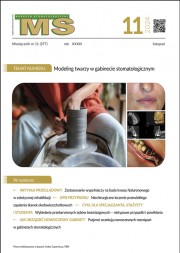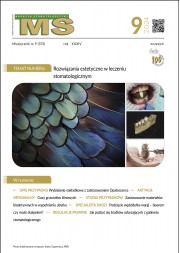
The phone is ringing
Doctor: Dental surgery. How can I help you?
Patient’s mother: Hello, may I speak with a dentist?
Doctor: Yes Madam, I’m a dentist. What can I do for you?
Patient’s mother: Doctor, I would like to schedule an appointment with you. Three months ago, at school, during PE class one of my son’s classmates accidentally hit him with his elbow. My son hasn’t complained of anything, but the front tooth has become grey in colour.
Doctor: Come today at 6 p.m., please.
Patient’s mother: Thank you. We will come for sure.
At 6 p.m.
Patient’s mother: Hello, we have an appointment at 6 p.m.
Doctor: Yes, that’s right. Have the son sat in the chair, please. How old are you?
Patient: I’m twelve.
Doctor: Is there anything else that bothers you besides tooth discolouration? Maybe something is hurting?
Patient: No, nothing hurts. Only the tooth has darkened.
Doctor: Okay. I will examine whether the tooth reacts properly. I will apply a swab to your tooth but it is unlikely to hurt. You will let me know then if you feel any-thing. And what?
The doctor checks for the response to cold stimulus in tooth that has been injured
Patient: I can just feel that you’re touching.
Doctor: And now?
The doctor examines the response of a corresponding tooth
Patient: Yes, now I can feel something cold.
Doctor: So, I’ll examine your tooth in another way. Do you feel anything now?
The doctor examines the response of the injured tooth to faradic current
Patient: No, I do not feel anything.
Doctor: And how about now?
The doctor examines the response of the corresponding tooth
Patient: Ouch! That hurts. At first I could feel tingling and then pain.
Doctor: Madam and dear friend, the case is clear. Probably we deal here with pulp necrosis. This was caused by the injury. Sometimes pulp is in the state of shock and does not respond to tests which are to assess its viability. But in your case, three months have passed and in fact, if all was well, there should be the appropriate response. In addition, the tooth is discoloured, suggesting the death of the pulp.
Patient’s mother: Oh no, and what now?
Doctor: Before I make a decision, I’ll take some X-rays. It is always carried out before root canal treatment, and I also need to check whether or not the root is damaged.
After the X-rays
Doctor: Well, the root is not cracked, but the inflammation is forming at the top part of it, so a decision about the treatment is irrevocable.
Patient’s mother: What about tooth discolouration?
Doctor: After root canal treatment I’ll bleach the crown. There should be no problem with tooth lightening. In such cases, the effect is usually good.
Patient’s mother: I am glad to hear that and thank you for your help.
VOCABULARY PRACTICE
Read the statements about pulp necrosis below and decide if they are true or false
- Tooth injury/tooth trauma is the only reason for which pulp necrosis may develop. T/F
- Pulp necrosis may be a possible cause if a patient reports a persistent toothache. T/F
- Pulp necrosis initially starts with pulpitis, inflammation in the dental pulp that can cause painful sensations and irritation. T/F
- Patients with pulp necrosis may have difficulties with eating. T/F
- Pulp necrosis is reversible. T/F
- In irreversible pulpitis drilling and filling are main treatment options. T/F
- While dealing with pulp necrosis, dentists may use an electric pulp tester, which indicates whether the pulp is healthy or not. T/F
- X-rays help determine whether inflammation has extended beyond the tooth apex and help exclude other conditions. T/F
Solve the crossword puzzle. Blue fields will form the solution
- a synonym for harm or damage; an act or event that causes something to no longer be fully healthy or in good condition
- a condition or state of one’s body when one is unable to feel anything in a particular part of body because of cold, injury, etc.
- inner part of the tooth
- an adjective relating to an asymmetric alternating current of electricity
- to change in colour especially in a bad way
- a particular feeling or experience that may not have a real cause
- an adjective describing feeling of many small sharp points pressing into your skin
- a form of electromagnetic radiation, similar to light but of shorter wavelength and capable of penetrating solids

Look at the steps of Diagnosis of Pulp Necrosis. Order the letters in underlined words to make logical completion of the blank spaces
Pulpal pain
Pulpal pain usually 1)___________ (SESDCEARE) with increasing pulp necrosis which will usually not cause pain as long as the 2)__________ (POLOTGIHCALA) process has not reached peri-apical 3)__________ (SSUETI).
Discolouration
Teeth with pulp necrosis often show clear discolouration of the crown which is 4)________ (IRDDSHE) at first, then bluish or greyish, resulting from the necrotic 5)__________ (EGDRAIINTIONTS) of pulpal tissue through blood pigments.
Sensitivity testing
Pulp necrosis can usually be determined by using electrical 6)__________ (STYSITIVIEN) tests. If tooth vitality remains unclear, a test cavity can be made. Vital pulp will cause pain as soon as the preparation has reached the 7) ___________ (DETINEN).
Spreading to peri-apical tissue
After the disease has spread to peri-apical tissue, the primary symptoms no longer result from pulp necrosis but rather from apical 8) _________ (ITISPRIOEDONT).













